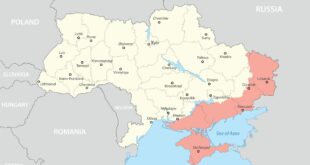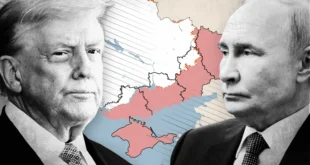In May 2025, Serbian President Aleksandar Vučić attended the Victory Day parade in Moscow alongside Vladimir Putin while simultaneously reaffirming his country’s commitment to European integration. This dual gesture, anchored in symbolic memory yet oriented toward a diplomatically uncertain future, captures the strategic ambiguity of a country positioned at the crossroads of multiple spheres of influence.
Modern Serbia’s defense policy is marked by a hybrid trajectory, deeply rooted in post-Yugoslav military memory while actively pursuing an expansive diversification of its strategic partnerships. This dual approach, balancing historical continuity and tactical adaptability, embodies a military doctrine striving to reconcile symbolic independence with operational pragmatism.
Yugoslav Legacy and Persistent Soviet Reflexes
The doctrinal foundation of the Serbian armed forces remains heavily influenced by the former Yugoslavia, particularly by the concept of total people’s defense, which emphasized full societal mobilization in the event of aggression. Although Tito broke with Stalin in 1948, the Soviet model left a lasting imprint on both military organization and national strategic culture. To this day, the symbolic weight of World War II, popular resistance, and military sovereignty shapes Serbia’s strategic outlook, fueling political narratives that valorize national autonomy in the face of foreign interference. However, this reliance on a strategic imaginary rooted in the 20th century risks impeding doctrinal evolution. Contemporary modes of warfare, such as hybrid conflict, cyber defense, and flexible coalitions, require a shift away from outdated paradigms to ensure strategic relevance and effectiveness.
Between Strategic Independence and Opportunism
Confronted with a complex geopolitical environment, Serbia has adopted a multi-source strategy for military procurement. It maintains active cooperation with Russia, acquiring MiG-29 fighter jets, Pantsir air defense systems, and armored vehicles. Simultaneously, it has turned to China for CH-92A drones, surveillance technologies, and reconnaissance systems.
This pragmatism extends westward: Serbia has purchased H145M helicopters from Airbus, developed technical cooperation with Israel, and participated in joint training exercises with NATO members, despite its refusal to formally join the Alliance. The goal is clear: to benefit from the best available technologies while avoiding exclusive dependence on any single actor. However, this all-direction procurement strategy creates significant logistical complexity. The partial incompatibility between imported systems and doctrines risks undermining interoperability and operational coherence, especially in scenarios requiring rapid, integrated military responses.
Militarily neutral but definitely strategically ambiguous.
Current Serbian doctrine is built on the principle of military neutrality, bolstered by discourse positioning Serbia as a regional power. President Vučić promotes the image of a Serbia capable of defending itself independently, particularly in relation to Kosovo, while safeguarding broader regional interests. This stance is supported by investments in the national defense industry, such as Zastava, Krušik, or even Prvi Partizan, aimed at reducing reliance on imports.
A quote from President Vučić encapsulates this dual strategy: “We have demonstrated our sincere and friendly attitude toward Russia by being one of the few European countries to refuse to impose sanctions on it.” This position, aligned with Belgrade’s historical ties to Moscow, reveals both strategic loyalty and a calculated attempt to differentiate Serbia within the European landscape.
However, the autonomy thus presented conceals a more complex reality. Serbia remains structurally dependent on the expertise, systems, and operational logics of several major powers. This fragmented dependency could ultimately undermine the coherence of its military apparatus and expose it to diplomatic pressure should its key partners adopt diverging stances. In such a scenario, Serbia may be forced to abandon neutrality and choose sides: an outcome at odds with its current strategic posture.
Far from being purely ideological or neatly aligned, Serbia’s military doctrine reflects a persistent effort to reconcile a glorified past with a fluid geopolitical present. Its choice to embrace extreme diversification, between nostalgic sovereignty and a quest for flexibility, yields a strategy that is both adaptive and vulnerable. While Serbia asserts military autonomy, its doctrine ultimately reveals a carefully balanced dependence between East and West, an asset or a liability, depending on the trajectory of global affairs.
Looking ahead, the viability of Serbia’s strategic posture will largely hinge on its ability to navigate mounting pressure from the European Union, particularly in matters of political and security alignment, alongside the implicit expectations of its traditional partners, notably Russia and China. With regional tensions still high, especially concerning Kosovo, any ambiguity in Serbia’s strategy may expose it to critical dilemmas. European integration, conditioned on clear foreign policy choices, could well become the ultimate test of the resilience of the active neutrality model Serbia seeks to preserve.
 Geostrategic Media Political Commentary, Analysis, Security, Defense
Geostrategic Media Political Commentary, Analysis, Security, Defense





